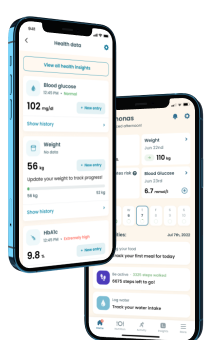What You Need To Know About Diabetes and ICD-10

Written by Grant West, PhD on February 9, 2020.
When most people think of diabetes, they think that there are two types and that’s all that you need to know. Unfortunately, this couldn’t be further from the truth. According to ICD code 10 for diabetes, the condition can be met with a strange presentation and an underlying cause that you may not know about quite yet.
Thankfully, we’ve done the research to bring you a guide about everything you need to know about the ICD-10 codes for diabetes. These codes cover just about everything you need to know when it comes to medical diagnosis, including diabetes. Below you’ll read all about the ICD-10 codes and how exactly they can relate to you.
What is Diabetes?
In general, diabetes is a disease that correlates to your blood glucose or blood sugar levels. When these levels are too high, your body may not make enough insulin. When this happens, the glucose will then stay in your blood and can’t reach any of your cells. If this occurs for a long enough period of time, you can get additional health issues from it that could have been avoided. This is why it is crucial to not only know what type of diabetes you have but how to manage it correctly.
Surprisingly, 25% of people who have diabetes don’t even know that they have it. This disease affects around 10% of the population in the United States. If you’re over the age of 65 you have a 25% chance of having diabetes. There are three common types of diabetes that the majority of people know about. Let’s talk a little bit more about each one of these types in detail.
Gestational Diabetes
Gestational diabetes is a disease that can only affect women. It develops during pregnancy and usually lasts until the pregnancy ends. It usually occurs when your blood sugar is too high. When this happens the baby’s blood sugar will rise as well.
You can be tested for gestational diabetes anywhere between 24 weeks and 28 weeks of your pregnancy. Those who have had gestational diabetes are more likely to get type 2 diabetes later on. Oftentimes, gestational diabetes can be misdiagnosed for type 2 diabetes.
Type 1 Diabetes
Another common type of diabetes is type 1. This is when your body doesn’t make insulin for itself. When this occurs, your immune system ends up getting rid of any cells that make insulin in the first place. Common signs of type 1 diabetes are a thirst that is never quenched, frequent urination, weight loss, extreme hunger, and more. The majority of people who have type 1 diabetes get diagnosed at a young age. If you have this condition, since your body doesn’t produce it on its own, you will need to take insulin daily in order to stay alive.
Type 2 Diabetes
Type 2 diabetes is related to insulin as well. With this type, your body either doesn’t make insulin at all or simply doesn’t use what it creates. Unlike type 1 diabetes, type 2 is usually diagnosed in adults. The common signs of type 2 diabetes are actually incredibly similar to type 1. Many people attribute getting type 2 diabetes to poor lifestyle choices such as living a sedentary life, having specific genetics or being obese. While it isn’t curable, there are changes you can make to help alleviate the disease.



Though these are the three most common types of diabetes, there are more you may be diagnosed with. The two less common types include diabetes related to cystic fibrosis and monogenic diabetes. For the monogenic type, you’ll find that the ICD-10 code for a family history of diabetes will likely be on your medical record.
What Exactly Are ICD-10 Codes?
ICD stands for International Classification of Diseases. All known diseases are classified and given a code. Doctors and healthcare professionals use these codes to label a diagnosis. Instead of your diagnosis saying “type 1 diabetes”, you may see a code in the form of a series of numbers and letters. ICD-10 codes are between three and seven letters and numbers long.
With that being said, not all diseases will be found in ICD-10. The codes found in ICD-10 are in the 10th Revision of the classification system. These codes were found in ICD-9 before late October 2015. The codes that were filed under ICD-9 are now in ICD-10. Unless you’re in the healthcare industry, this may be quite confusing. Hopefully, we can make it rather easy to digest.
The healthcare field, mostly doctors, decided the switch between ICD-9 and ICD-10 needed to take place so that they could more accurately record a diagnosis. It may shock you to know that ICD-9 had just ⅕ of the number of codes that ICD-10 does!
Which Codes Cover Diabetes?
The ICD-10 has so many codes, it would be nearly impossible to go through them all. The ones that cover diabetes and that can bring you helpful information are linked below:
- Drug or chemical induced diabetes (codes that start with E09)
- Diabetes due to underlying conditions (codes that start with E08)
- ICD-10 code for type 2 diabetes (codes that start with E11)
- Diabetes-related to pregnancy (codes that start with 024)
- ICD-10 code for diabetes type 1 (codes that start with E10)
- Other types of diabetes not covered by the previous categories (codes that start with E13)
If you don’t know what your code is, you can look at your medical records relating to your diabetes diagnosis. When a code has fewer characters, there is less knowledge about how one came to have that condition. On the other hand, when a code has a really long set of numbers and letters, the diagnosis is usually incredibly specific.
Rules for ICD-10 and Diabetes
When it comes to using an ICD-10 code for diabetes, a patient may get several codes. It all has to do with the specifics of your condition. For example, people who have Type 2 diabetes from being overweight, you may have an additional set of numbers if other factors apply to your condition. Type 2 diabetes ICD-10 is much different than type 1 diabetes ICD-10.
If you’re pregnant and diabetic, you will be assigned at least two codes. For women that get gestational diabetes, you’ll only get one code. If the type of diabetes you have has yet to be documented or put on your record, there is a code (E11) that will be used as a default until specifics are added in.
For patients who use insulin, they will all have at least one of the same codes. Again, we understand that this may be a bit confusing, but your primary doctor would be happy to help you understand exactly which codes you have and what they mean.
Bottom Line
Diabetes is a terrible condition that affects millions of people around the world. While there is no cure, there are plenty of lifestyle changes that may make having diabetes a bit easier on your body. Hopefully, now you understand the relation between the ICD-10 codes and diabetes. If you have any questions about what specific codes you have on your medical records, schedule an appointment with your doctor today.
Take a quiz and get your diabetes-management plan today!









